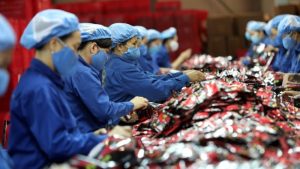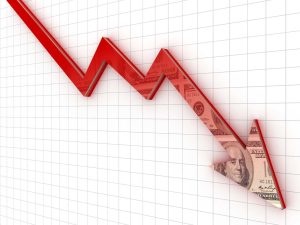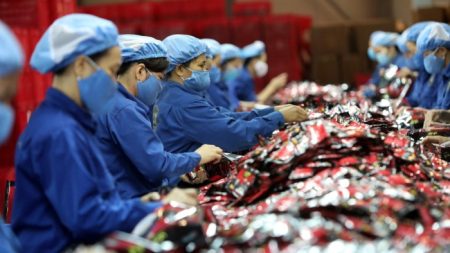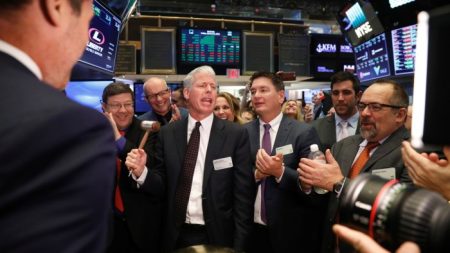In 1867, pharmacist Henri Nestlé combined dried cow’s milk with cereals and sugar to create a safe, easily digestible breast-milk substitute. That infant formula was the foundation of what would become the world’s biggest food company.
Now, Nestlé is embracing a new “significant demographic opportunity”: the planet’s aging population.
The Swiss company’s pivot from babies to baby boomers is part of a bigger push into healthier products, as it looks to capitalize on the return of dieting that is reflected in the insatiable appetite for weight-loss drugs Wegovy and Ozempic.
“Losing weight and being on a diet has become cool again,” CEO Mark Schneider told journalists Thursday. “You can expect a continued new stream of products to address that need.”
Nestlé’s targeting of older and more weight-conscious consumers comes as its worldwide sales were hurt last year by rising prices for its products, which include Nescafé coffee and KitKat chocolate bars.
Consumers traded down to more affordable brands in the context of a “food price inflation spike of historic proportions,” Schneider said.
Sales volumes are expected to recover this year as some prices ease, but “premium” products — those at least 20% more expensive than standard offerings — will remain core to Nestlé’s growth strategy, according to Schneider.
The company also plans to use its expertise in nutrition to develop products that serve the growing numbers of older consumers.
“We remain committed to nutrition across all life stages but we do see now a particular demographic opportunity when it comes to healthy aging solutions,” Schneider said.
The shift in focus provides insight into how the world’s biggest companies are being forced to adapt to a rapidly aging world, as people live longer and birth rates plummet.
According to projections by the United Nations, the number of people aged 65 years or older worldwide will more than double by 2050 to 1.6 billion, from 761 million in 2021.
Nestlé said in October that it would close a factory in Ireland that makes baby formula by 2026, in part because of China’s plunging birth rate. The number of newborn babies in the country declined sharply from some 18 million per year in 2016 to 9 million last year.
While Nestlé still sees value in making high-quality infant nutrition, declining birth rates mean such products will become a smaller share of its business, according to Schneider.
“Clearly, across the world in most major markets, the elderly and older population is growing. They have specific nutritional needs… and we’re fully committed to addressing those needs,” Schneider said.
He pointed out that Nestlé already makes several relevant products — such as its Solgar supplements that contain vitamins and minerals promoting cell health — but said there would be “more to come.”
He gave as examples low-calorie products that help manage weight, such as the company’s Lean Cuisine range; those that minimize the loss of lean muscle mass, which accelerates in old age, such as Nestlé’s Boost protein drinks; and foods that support heart health, such as the company’s Omega Plus Milk Powder.
Some of these products will be equally relevant to consumers trying to lose weight — a large and growing market, and one Nestlé is equally eager to tap.
More than 2 billion people worldwide are either overweight or obese — meaning they have a Body Mass Index above 25 or 30 respectively. On current trends, that number is expected to increase to more than 4 billion by 2035, according to the World Obesity Federation.
Nestlé already generates more than 1.5 billion Swiss francs ($1.7 billion) from products that it says provide “nutritional benefits” to people on GLP-1 diabetes treatments, namely Wegovy and Ozempic, which are also prescribed to help with weight loss. One example is its Optifast high-protein shakes.
The rising interest in products that help manage weight represents a “shift in consumer preference,” Schneider said.
In September, Nestlé announced plans to increase sales of more nutritious products by 20-25 billion francs ($22.8-$28.5 billion) by 2030.
Read the full article here















